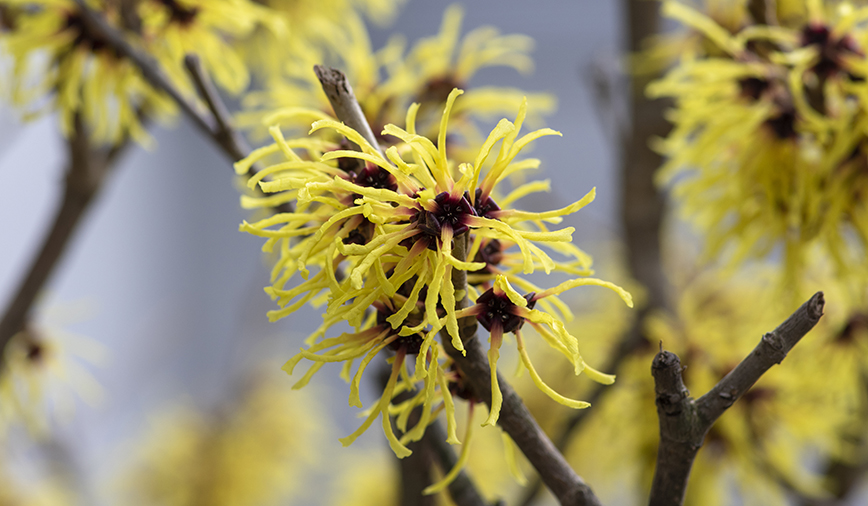Pam’s Perspective
From the…
Pam Otto is the Manager of Natural Programs and Interpretive Services for the St. Charles Park District
December 7, 2012
I will always remember my first encounter with witch hazel. I was about six years old and, for whatever reason, running headlong around my parents’ house. Eyes down, arms outstretched, I was chasing after something my tender young brain had deemed very important when, BAM! I hit a wall.
Needless to say, the racing around ended rather abruptly, and I was left to ponder the sensation of my forehead expanding into a nice-sized lump. “Quite an egg,” I remember my mom saying as she wrapped up some ice in a washcloth and set it on the bulging knot. “Better get the witch hazel.”
I can still picture the bottle, with its yellow, black and red label, and without too much effort can still recall the cooling sensation the liquid left as Mom dabbed it on the “egg.” (I also remember the oohs and aahs I got at school that afternoon when I lifted up my bangs and showed off the purplish lump which, despite the witch hazel, was quite impressive.)
Since then I’ve had many more occasions that were witch hazel-worthy, but none are as clear in my mind as that first experience—unless you count the most recent run-in, which I can picture as though it were yesterday.
Actually, it was yesterday.
Walking through the Native Plant Garden behind the Pottawatomie Community Center, I felt a tug as a branch grabbed my sleeve. Looking down, I recognized my old friend witch hazel. But, this time, rather than being decked out in a
yellow, black and red label, it bore the colors of its more natural form, that of witch-hazel, a shrub native to eastern North America.
Its gray branches, tinged with red at the tips, had lost most of their leaves—all the better to see one of this plant’s most remarkable features: its flowers. Witch-hazel, Hamamelis virginiana, a shrub long cultivated for its medicinal properties, also has the amazing trait of blooming in December.
The flowers themselves are small, maybe an inch long, but brightly colored in shades of yellow. The narrow petals and equally skinny sepals curve and twist around, like teeny streamers shot from wee party poppers, and give the shrub a distinct, festive appearance.
But flowers in December aren’t the only trick up this plant’s colorful sleeves. Last year’s blooms have become this year’s seed capsules, ready to burst forth at any moment and release the seeds that will become next year’s new shoots. And I do mean burst. When ripe, witch-hazel’s seed pods literally explode, flinging seeds as many as 10 or 20 feet away from the parent shrub.
Maybe it was this astounding feature, maybe it was something else that attracted the Native Americans to this shrub. But for centuries, even millennia, native people have been using witch-hazel as a medicinal plant. The Osage used the bark to treat sores and tumors. The Potawatomi steamed away the pain of sore muscles by placing witch-hazel twigs on the hot rocks of sweat lodges. And several tribes boiled the leaves and twigs to create one of the first-ever first-aid solutions, used for healing bruises…and bumps on the head.
Early settlers soon learned of witch-hazel’s amazing curative powers, and began brewing their own concoctions. In fact, much of the commercial witch hazel sold in drug stores today is produced in Connecticut, not far from where the Pilgrims first landed.
With the holiday season in full swing, you may be looking for a reason to get out and walk a bit, either in preparation of or as reparation for one celebration or another. If you find yourself in one St. Charles’ outstanding natural areas, take a look around and see if you can spot witch-hazel, the shrub. Just be careful not to trip or bump your noggin. Our woods are fresh out of witch hazel, the rub.

